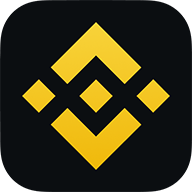What is the project about?
Quantum Network is a blockchain platform designed to enhance the scalability, efficiency, and interoperability of digital transactions across multiple blockchain ecosystems. At its core, Quantum Network aims to address some of the fundamental challenges facing the blockchain industry today, including high transaction fees, slow transaction speeds, and the complexities of interacting across different blockchain platforms.
What makes your project unique?
1. AI-Driven Transaction Cost Optimization
Quantum Network uses artificial intelligence to dynamically adjust transaction costs. This AI system analyzes network congestion and user behavior patterns to optimize fees in real-time. By leveraging AI, Quantum ensures that transaction costs are kept at a minimum while maintaining fast processing times, which is crucial for user satisfaction and network scalability.
2. Solana Integration for Cross-Chain Swaps
Quantum Network includes integration with Solana, one of the fastest blockchains, known for its high throughput and low transaction costs. This integration allows users of Quantum Network to perform cross-chain swaps using Solana’s blockchain, which significantly enhances the speed and reduces the cost of transactions, especially for users looking to interact with decentralized applications (dApps) and services outside the Ethereum ecosystem.
3. Layer 2 Solutions
Quantum Network implements advanced Layer 2 solutions to address the common scalability issues associated with many blockchains. By processing transactions off the main chain (Layer 1), Quantum Network ensures faster transaction speeds and lower fees, significantly improving throughput without compromising on security.
History of your project.
Fairly new launch, has only been out 104 days, and has amassed over $100k volume on both DEX and CEX
What’s next for your project?
Layer 2 Blockchain testnet release (under development)
What can your token be used for?
1. Transaction Fees
Tokens can be used to pay for transaction fees on the network. This includes fees for token swaps, smart contract executions, and other on-chain activities. Using the native token for fee payments incentivizes holding and using the token, as it is often required to interact with the platform.
2. Governance
Token holders can participate in the governance of the network, which includes voting on proposals for upgrades or changes to the system. This democratic approach allows token holders to influence the direction of the network's development, policy changes, and feature implementations.
3. Staking
Tokens can be staked by users to participate in the network's security and consensus mechanisms. Staking typically involves locking up a certain amount of tokens to support network operations, such as validating transactions or creating new blocks if the network uses a Proof of Stake (PoS) or similar consensus model. Stakers often receive rewards in the form of additional tokens.
4. Liquidity Provision
Tokens can be used to provide liquidity in decentralized exchanges (DEXs) or liquidity pools within the Quantum Network ecosystem. Liquidity providers often benefit from earning a portion of the transaction fees generated from the trading activity involving their provided liquidity.
5. Incentive Mechanisms
Tokens can be used to incentivize various behaviors within the ecosystem, such as rewarding users for adding content, participating in certain network activities, or promoting the network. These incentives help build a more active and engaged community.
6. Reward Distribution
In the context of Quantum Network's usage fees structure, tokens might be redistributed to holders as part of a reward system, where holders receive a percentage of the transaction fees or other earnings generated by the platform. This can include buyback and burn mechanisms to reduce supply and potentially increase token value, or direct distributions that reward long-term holders and users.
7. Access to Services
Tokens might grant holders access to premium features or services within the Quantum Network ecosystem, such as advanced trading capabilities, early access to new tools, or enhanced data services.
8. Interoperability and Cross-Chain Functionality
In a network designed for cross-chain interoperability, the native token can play a crucial role in facilitating and simplifying transactions across different blockchains, acting as a bridge or intermediary for value transfer.























